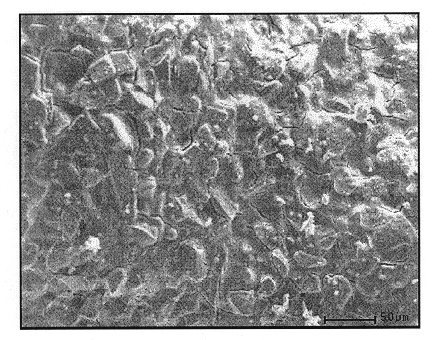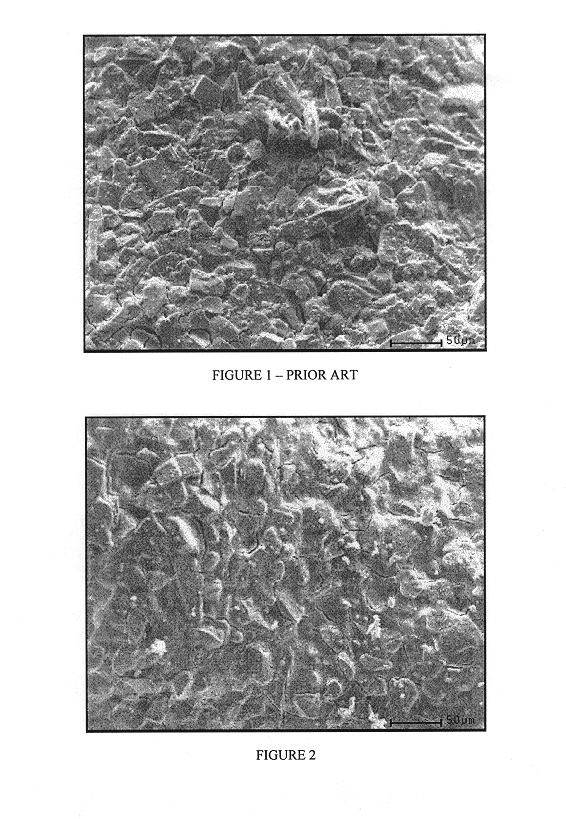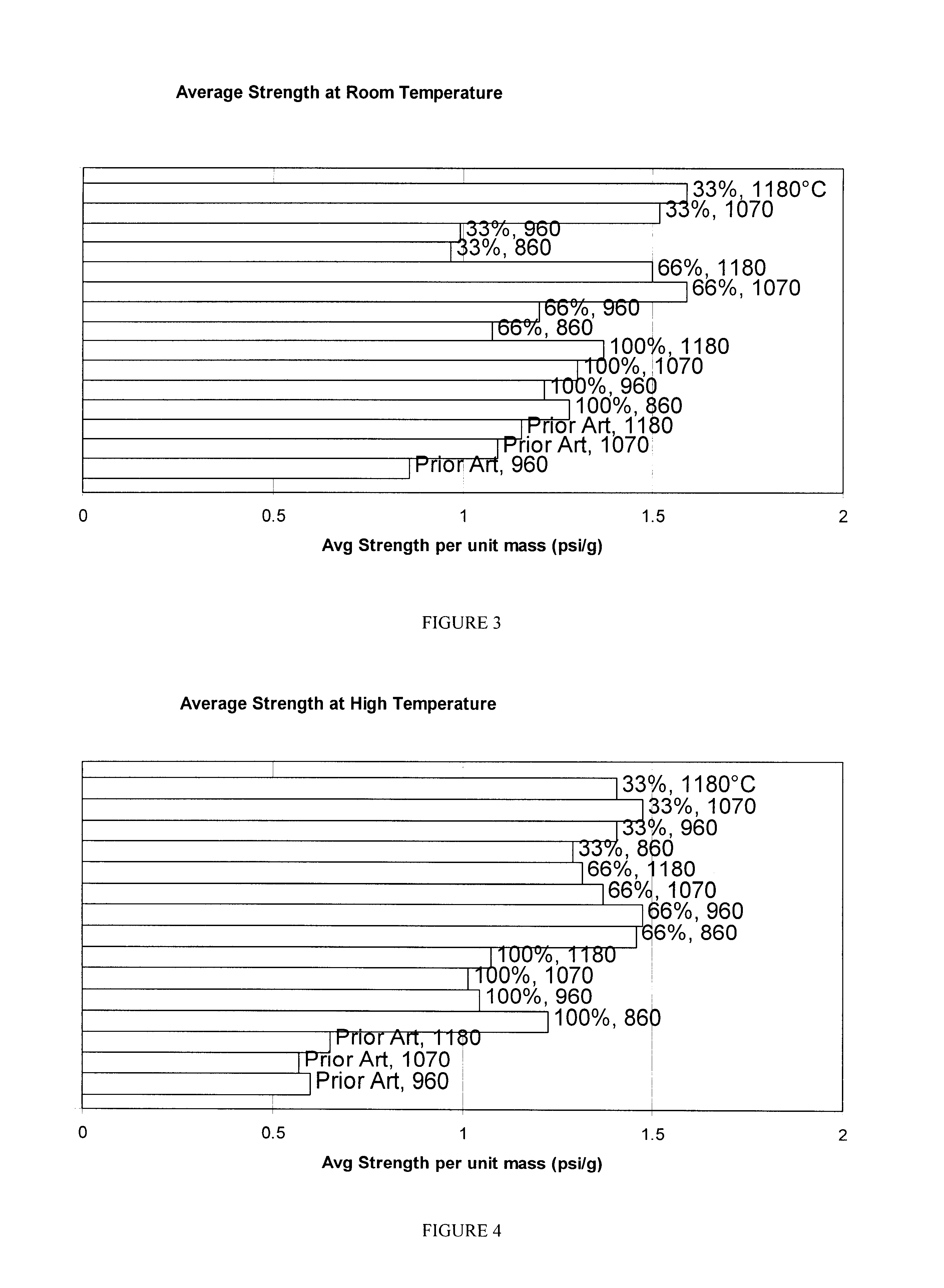High strength SiC filter and method for the manufacture thereof
a technology of high-strength sic filter and filter body, which is applied in the direction of ceramicware, filtration separation, separation process, etc., can solve the problems of low strength, poor chemical resistance, unsuitable for many other potential applications, etc., and achieves the effect of less strength, easy cutting and shaping, and less degrading strength
- Summary
- Abstract
- Description
- Claims
- Application Information
AI Technical Summary
Benefits of technology
Problems solved by technology
Method used
Image
Examples
example 2
An additional slurry was prepared having a formulation exactly the same as the formulation in Example 1, except that the amount of fumed silica which was used was 167 pounds (approximately 17%) and 42 pounds (approximately 4%) of fused silica was added. This resulted in a slightly less strong filter which was easier to cut and to shape. It is believed that up to 10% of the fused silica may be added without degrading the strength so long as a substantial amount of fumed silica is used.
PUM
| Property | Measurement | Unit |
|---|---|---|
| temperature | aaaaa | aaaaa |
| temperatures | aaaaa | aaaaa |
| particle size | aaaaa | aaaaa |
Abstract
Description
Claims
Application Information
 Login to View More
Login to View More - R&D
- Intellectual Property
- Life Sciences
- Materials
- Tech Scout
- Unparalleled Data Quality
- Higher Quality Content
- 60% Fewer Hallucinations
Browse by: Latest US Patents, China's latest patents, Technical Efficacy Thesaurus, Application Domain, Technology Topic, Popular Technical Reports.
© 2025 PatSnap. All rights reserved.Legal|Privacy policy|Modern Slavery Act Transparency Statement|Sitemap|About US| Contact US: help@patsnap.com



